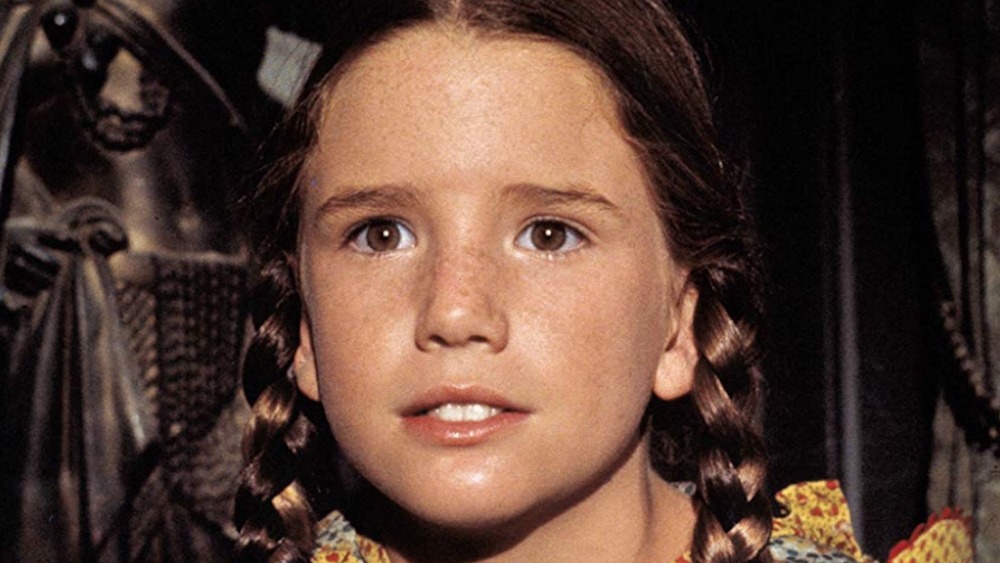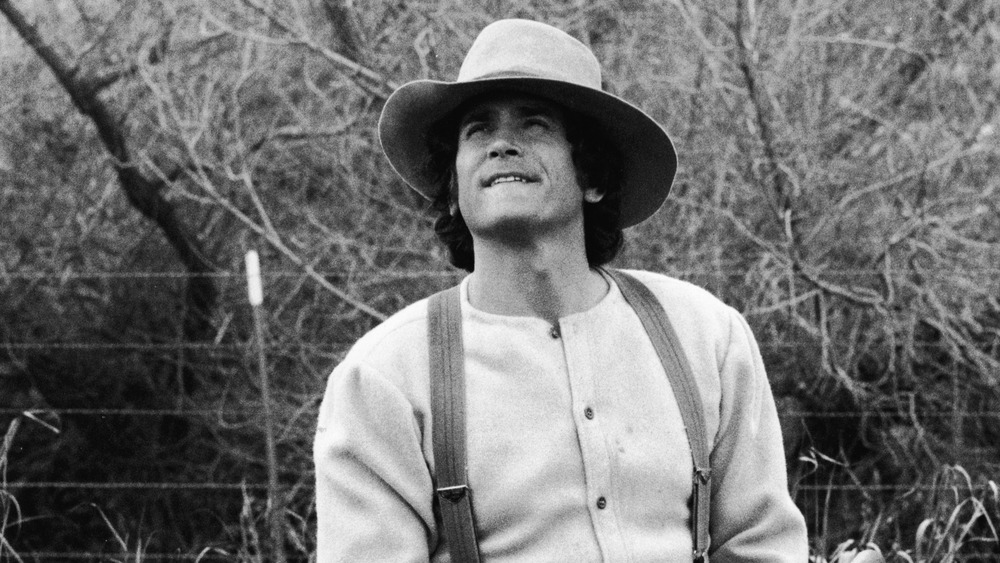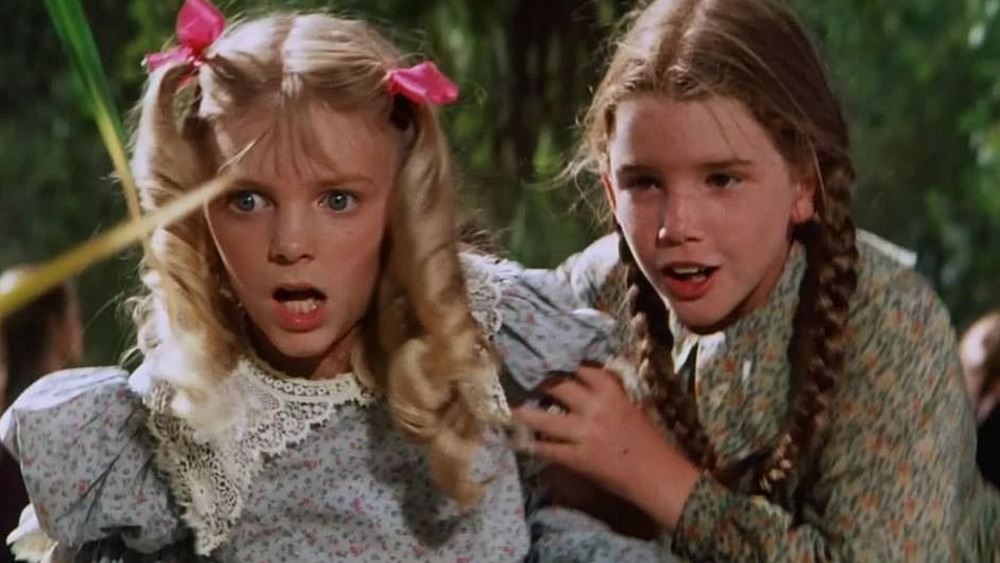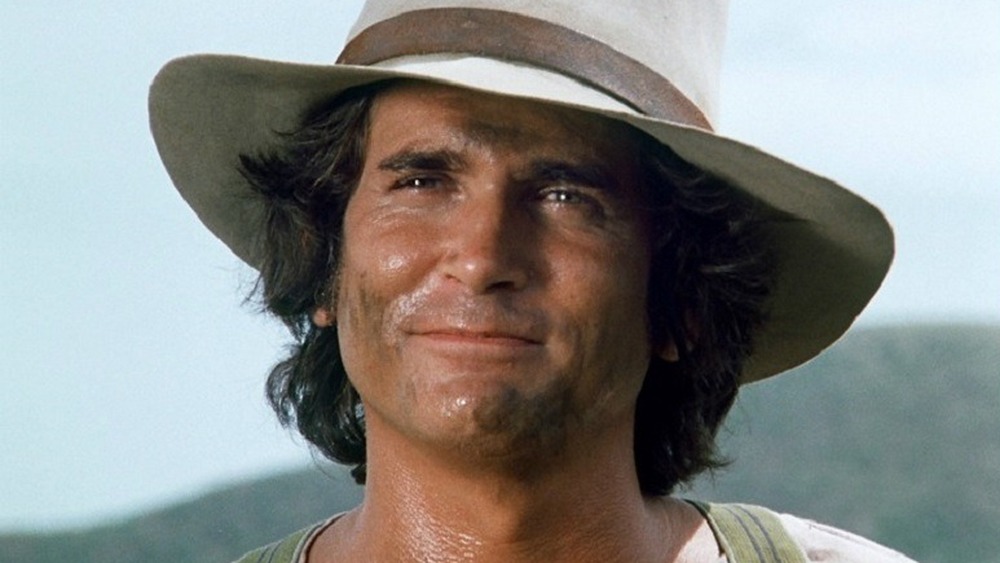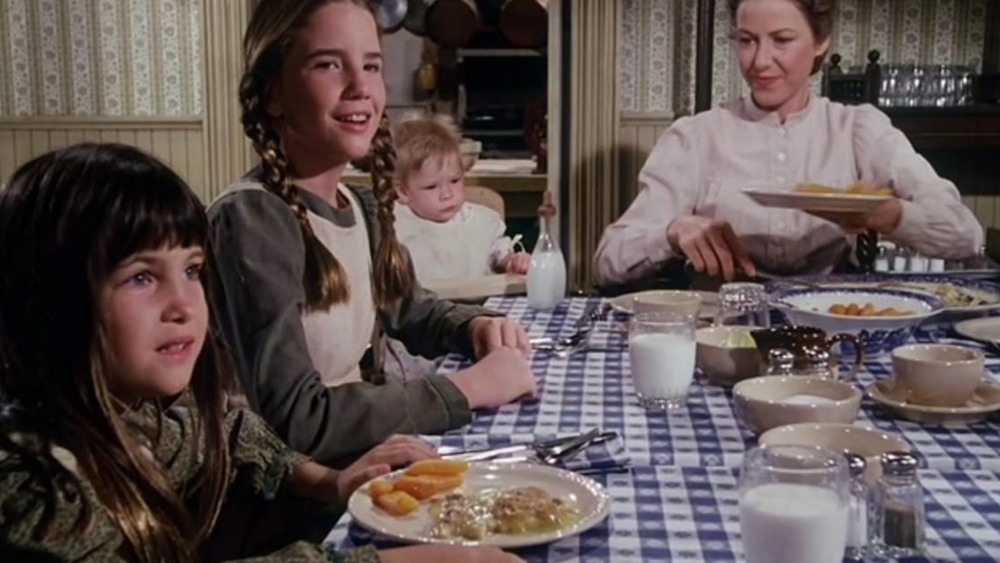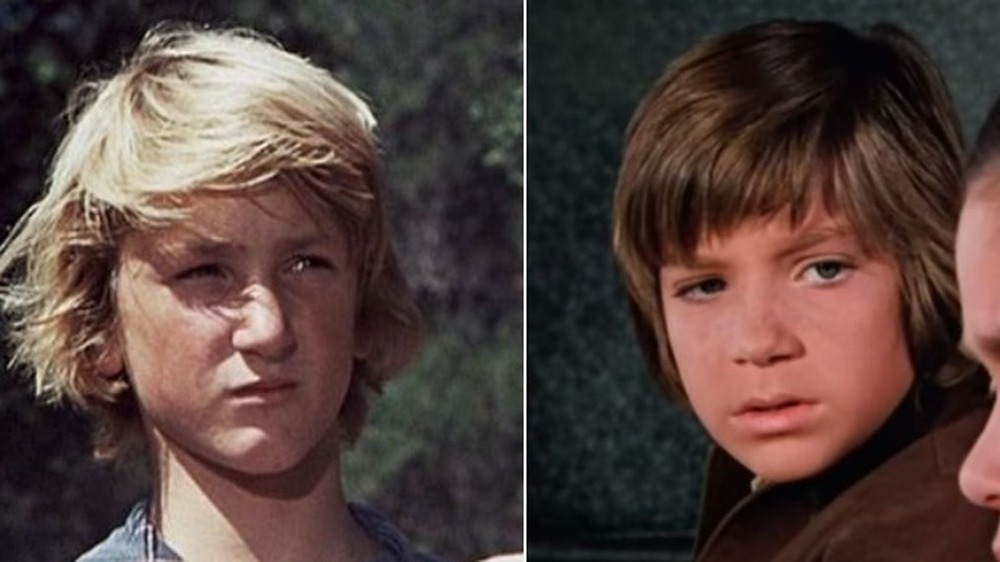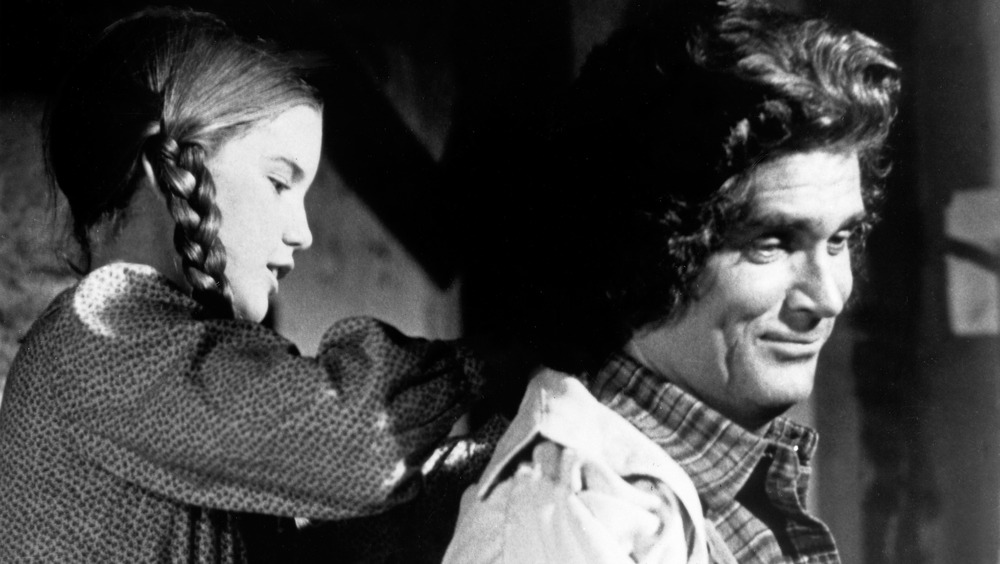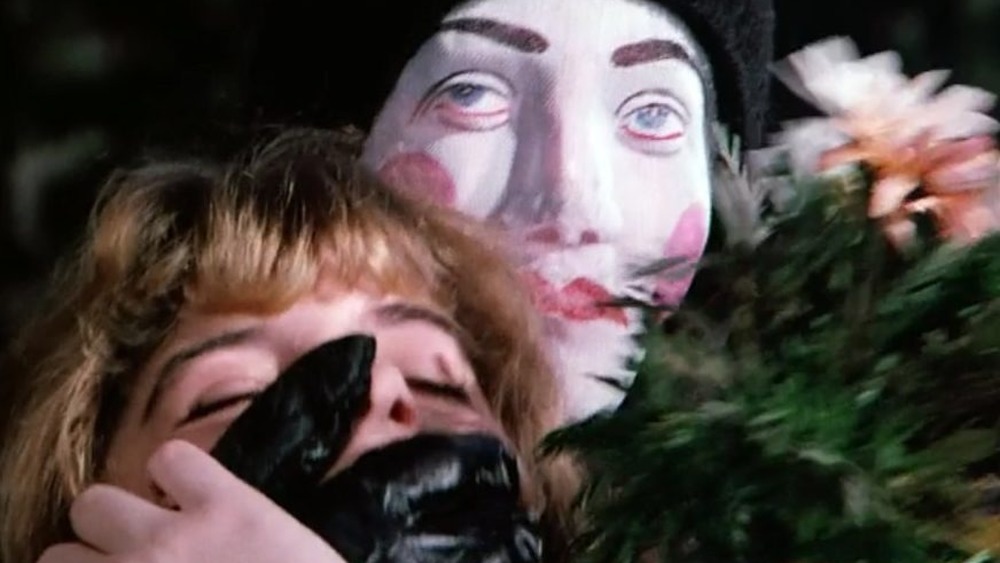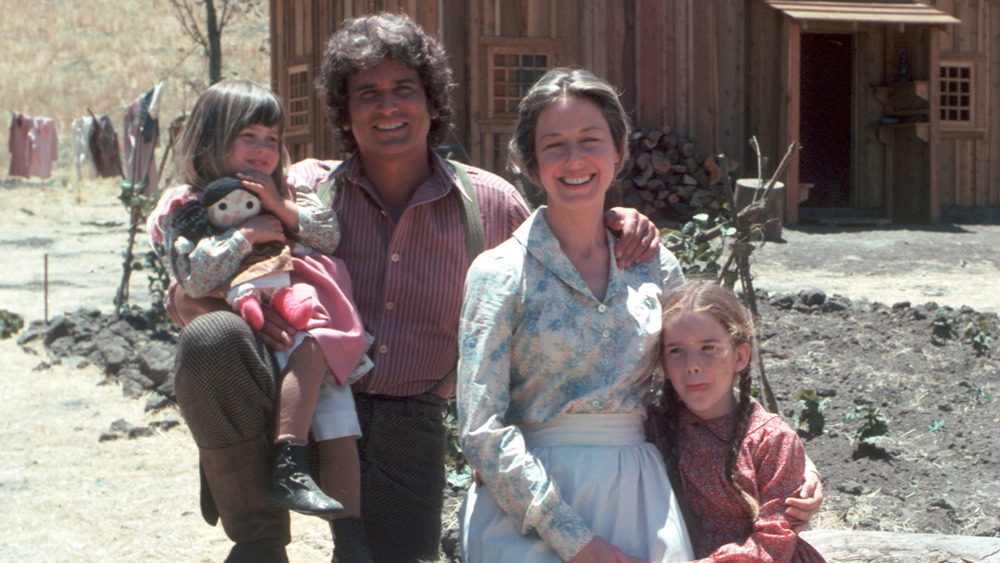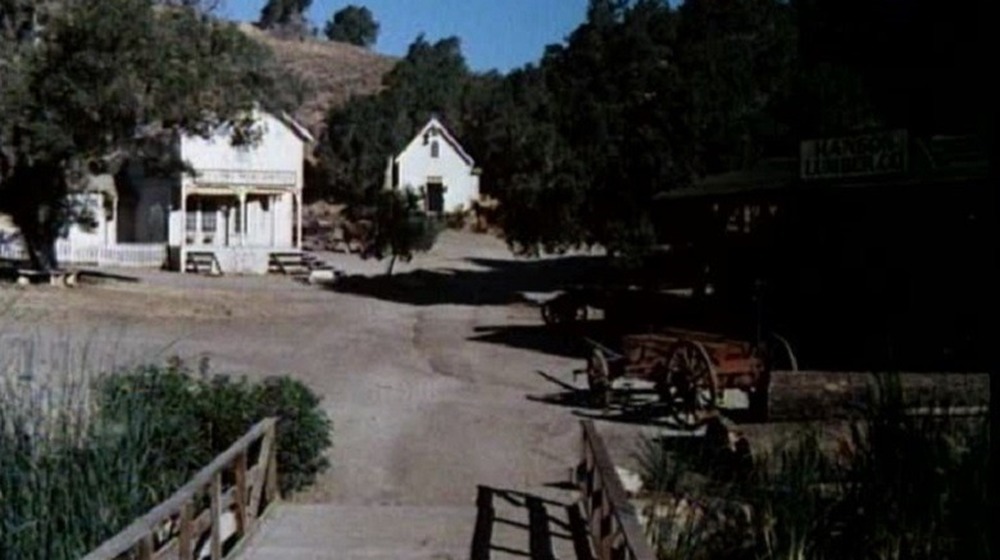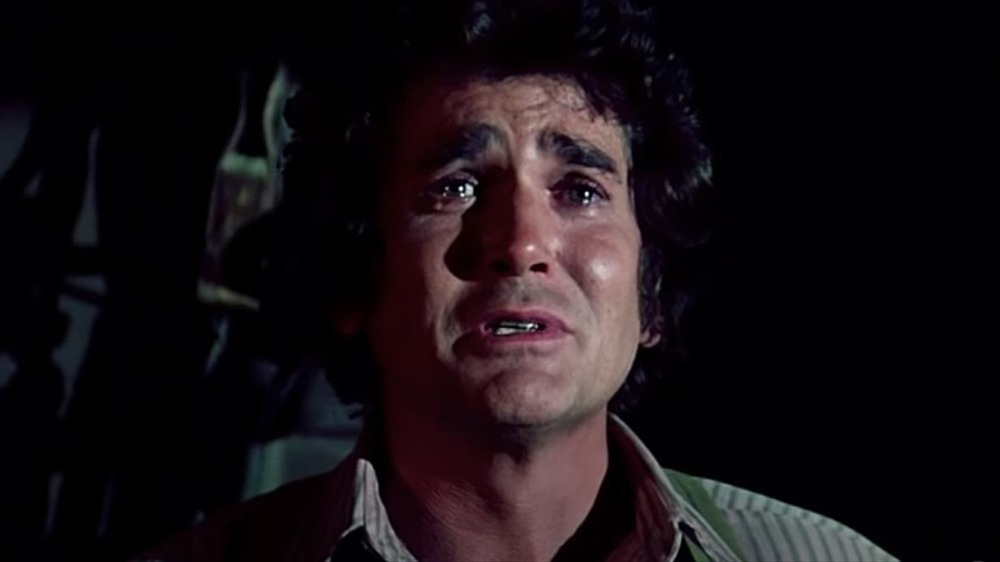Little House on the Prairie Mary Can See Again
The Untold Truth Of Little House On The Prairie
Based on the archetype children's novels past Laura Ingalls Wilder, Footling House on the Prairie left a huge mark on a lot of our childhoods. Over the decades, the bear witness has carved out its own cultural niche, and with nine seasons — and years of reruns — Lilliputian Business firm has plant a huge audience.
In fact, fans of the testify appreciate it for a variety of dissimilar reasons. Some, affectionately called "bonnetheads," similar the historical setting and the wholesome family vibe. Others just sit down around with buckets of popcorn, waiting to see what wild thing might happen side by side on a evidence that often delights in melodrama and the hilariously bizarre. And more than a few just accept hoped that Michael Landon would take his shirt off once more.
And with such a popular series, it should come as no surprise that at that place are quite a few backside-the-scenes stories and fascinating facts for diehard fans. From backstage trivia and secrets of the testify's success to its lasting place in viewers' hearts, there's a lot to talk about when information technology comes to examining the untold truth of Fiddling House on the Prairie.
Michael Landon'southward vision dominated Piddling Firm on the Prairie
Little Business firm on the Prairie had Michael Landon's stamp on it from the beginning, and he exerted a lot of creative control over the show — so much, in fact, that he reportedly drove away Ed Friendly, his co-executive producer. In a 1974 interview with People, Friendly complained that Landon had no concern existence a writer or producer. He idea Landon strayed too far from the books in giving the Ingalls family unit an easier life. Every bit he said, "I've renamed the series How Flush Is My Prairie? They have everything just a Cadillac."
But for some, Landon's cozier vision was a draw, and the show was a fine expression of his warmer side. Cindy Landon, his widow, told Closer, "If you lot scout Picayune Firm, truly information technology was like watching Michael. The love that he had for his family unit, the type of person he was — it was all credible." She wasn't solitary in thinking that. In an interview with CBS, Melissa Gilbert said without hesitation, "The show's values ... were admittedly a reflection of the values of our leader, of Michael Landon. He was that man. He believed that people are always really good at middle."
When Trivial House on the Prairieserves every bit comfort viewing, viewers are responding to Landon'south better nature. He might've sacrificed historical accurateness and sanded the crude edges off of prairie life, but he also provided the testify's sense of heart and fabricated it something viewers all the same find reassuring.
Laura's worst enemy was Melissa Gilbert'due south all-time friend
Laura Ingalls was always butting heads with Nellie Oleson, but whenever the cameras weren't rolling, actresses Melissa Gilbert (Laura) and Alison Arngrim (Nellie) were inseparable. When they were off the ready, that closeness could misfile loyal Little House on the Prairieviewers who couldn't run across that there was a thick line between fiction and reality. As Melissa Gilbert said at EW's cast reunion, "The two of us would go places together, and people would try to protect me from her. Fifty-fifty when I was x, I'd want to say, 'Come on, information technology's a TV show.'"
People expected to encounter Melissa Gilbert being chummy with the other Melissa — Melissa Sue Anderson, who played Mary, Laura's sister. Merely the two were never that close. In an interview with AJC, Anderson put it tactfully, maxim, "I honestly do not accept a lot of memories of the two of us. We were very, very different." She was a lot quieter and, in her words, less "zany" than Arngrim and Gilbert. So in her instance, the Tv set testify persona was a trivial more authentic. Mary was ever the best-behaved Ingalls sister.
At the bandage reunion, Alison Arngrim joked about the same grapheme-extra parallel. "[Anderson] looked at us like we were total juvenile delinquents. I think she thought we would go her in problem if she hung out with u.s.a., which is perfect for her character because Mary was such a little narc."
Backside the scenes, the testify was full of pranks
Michael Landon asked anybody on the show to work hard. Rachel Greenbush, one of the twin actresses who played young Carrie Ingalls, reminisced in an interview with Closer that, "When it was time to piece of work, yous had to be focused."
Simply when it wasn't time for work, it was time for play, and the play could get as enthusiastic and goofy as anyone could perhaps want. Inseparable buddies Melissa Gilbert and Alison Arngrim were constantly playing together. At a cast reunion, Gilbert talked to EW about how she and Arngrim used to organize "some ballsy games of tag and Carmine Rover."
However, the kids' fun had nothing on what the adults could get upwardly to. One of Melissa Gilbert'southward favorite stories to recount in interviews has to exercise with Landon's get-to trick for "marriage security." During the show's run, Landon was an undeniable heartthrob, which may be the answer to why Pa Ingalls spent and so much time shirtless. But while Landon was happy to convert crushes into ratings, he didn't always similar fans hanging around the fix ogling him. Luckily, he had a surefire play a trick on to drive them abroad. Gilbert told Amusement Weekly, "I'd catch frogs, and Mike would put the frogs in his rima oris and walk over to people and talk, and and then the frogs would leap out. ... [The women would] always scream." No kidding.
That domicile-cooked food was anything but
If you've ever watched Little House on the Prairie and pined for a gustatory modality of that pioneer cooking, getting it could be easier than y'all think.
Putting nutrient on the tabular array might've been hard piece of work for Ma Ingalls, but backside the scenes, the evidence kept things simple — and inexpensive. When Melissa Gilbert spoke with Parade to promote her new cookbook, she revealed a backstage tidbit that made it clear none of the recipes in her book could've stemmed from the show considering what they were actually eating wasn't dwelling house cooking by whatsoever stretch of the imagination. Those Ingalls family dinners? Dinty Moore beef stew and Kentucky Fried Chicken, with a side of Pillsbury biscuits. Suddenly, that kitchen table looks a lot less like a romantic vision of times gone by.
Only even if those dinners came together by virtue of a drive-thru window and a quick trip to the convenience store, the results weren't too shabby. At least not according to Gilbert, who admits, "I was ever the commencement i eating the actress food. I would just gorge myself!"
Sean Penn and Jason Bateman debuted on the show
Before they became major movie and boob tube stars, Sean Penn and Jason Bateman were child actors, and they both got their first pause on Piffling House on the Prairie.
Penn's first office is easy to miss, specially since he was uncredited. He was only one of a handful of unnamed extras who helped fill out the boondocks of Walnut Grove. It'southward piece of cake to come across how he wound upwardly with the office, though. His father, Leo Penn, was a longtime Tv director who worked on numerous '70s and '80s shows, and little Sean Penn's onscreen appearance was in one of his dad's episodes, "The Voice of Tinker Jones." How's that for a "Bring Your Kid to Work Twenty-four hour period" feel?
Bateman, on the other paw, was an bodily graphic symbol on Little House. Starting in the seventh season, he played Jason Cooper, an orphan the Ingalls family takes in. (He was one of several, really. Fans volition fondly remember that the show liked its orphans.) The role — which he continued for 21 episodes — kicked off his long-running and tremendously versatile career, with Bateman moving back and along hands between not only movies and Tv only also comedy and drama.
Trivial Firm on the Prairie was a skilful identify to be a child actor
Existence a kid actor tin be stressful, and enough accept burned out or chosen to walk away from the business concern entirely. Since Trivial House on the Prairie was a family show that starred several young actors, its behind-the-scenes legacy could involve horror stories about kids asked to shoulder too much work too soon.
Only that's non the case. The old child actors of Petty Business firm speak virtually their experience with real warmth. Why? Well, for one thing, at that place was fun – games, crafts, and birthday parties consummate with cake. It was also a creatively and professionally rewarding experience, which meant a lot to the young actors. In an interview with Parade, Melissa Gilbert said, "Nosotros were treated as [kids], merely then in that location were moments when nosotros were actually shooting that I was treated no different than the adults. I was an adult correspondent to an artistic endeavor. Information technology was incredibly validating."
Michael Landon had a gift for finding the right balance between offering support and demanding professionalism. And he knew how to adjust his standards for kids. He didn't ask for more than they could requite. Co-ordinate to Albert actor Matthew Laborteaux, who spoke to EW, "As long as you showed upwards on time, knew your lines, worked hard, and, yous know, gave a s***, y'all were aces in his volume." In a globe total of rough starts, Little House seems to have offered a polish rail and left its bandage with fond memories.
Nine seasons gave the show fourth dimension to wander off to some weird places
Even back in 1974, Michael Landon was pointing out to People that the show needed to generate a lot of textile — more than the vii books they'd optioned could reasonably give them. To fill up nine seasons, they had to get creative.
And in the quest for new ideas, the writing team ventured into some strange territory. The most infamous episode is probably "Sylvia," which features a terrifying aggressor in one of the world'due south creepiest masks. At least it took seven seasons to get from Wilder's beloved children's novels to "mime rapists." While that's probably the highlight — or lowlight — of the show's creativity, it also offered diversions that included circus fat ladies and adopted orangutans. And, as if determined not to exist topped by anything that went before it, the show also made certain to have a literally explosive finale, equally Walnut Grove'southward citizens blew upward their own town.
But this weird soap opera quality is one of the things that makes Little Business firm endure. It was family unit fare that besides came with classic primetime melodrama. The show managed to have as many h2o cooler-worthy twists every bit Game of Thrones, and fans are even so boggling over some of them.
This quintessentially American show was popular in both French republic and Espana
Little House on the Prairie seems like it should exist classic Americana, the kind of show that's barely comprehensible to countries that don't have some full general cultural nostalgia about pioneer days. But equally it turns out, the series thrived with at least some European audiences.
When information technology was ambulation, the prove was a hit in Spain. The TP de Oro, a Spanish television award, recognized Lilliputian Business firm multiple times. In 1976, Karen Grassle won for Best Foreign Actress for her work every bit Caroline "Ma" Ingalls, and Michael Landon took second place as Best Strange Actor. The series besides won that year for Best Foreign Series as a whole. And in 1980, Melissa Sue Anderson — Mary Ingalls — took home the Best Strange Extra accolade.
Sometimes countries even recognize themselves in the series. Bratty Nellie Oleson is a huge hit in France. Alison Arngrim is sometimes there for three months, making the rounds of public appearances and meeting adoring fans. She's one of them. As she said to The New York Times, her French fans "don't recollect [Nellie'southward] mean. They just call up she's French."
Walnut Grove was e'er destined for devastation
Fiddling House on the Prairie built upwardly Walnut Grove as a home abroad from home for viewers, a cozy little town — albeit 1 unusually plagued past drama. It's a picayune jarring, then, to get to the concluding episode and find that the show concludes with the townspeople blowing Walnut Grove to kingdom come.
Within the evidence'south universe, the defiant citizens of Walnut Grove determine to destroy their town because they'd rather see it turned to rubble than have it autumn into the hands of a ruthless programmer. But the real reason had more to exercise with backstage necessity. The sets were in Simi Valley, built on leased land, and one of the atmospheric condition in the original agreement was that the network would leave the land more or less as they found it. One way or another, the carefully created boondocks had to become, and and so executive producer Michael Landon decided to have it get in the showiest and near satisfying fashion possible. He told The New York Times, "I think information technology makes for a good strong pioneer catastrophe. It was likewise a nice catharsis for the bandage and crew. At that place were lots of tears when we finally blew upwardly the town."
Some of those tears might've been from whoever oversaw the show'southward continuity because NBC wound upwards making the foreign telephone call to reverse the last two episodes' air dates. Walnut Grove blew upwardly ... and so came back again for a bizarre curtain call.
The fix was investigated equally a possible cancer hotspot
If there's one dark truth that tin make Petty Firm on the Prairie unsettling, it's this: The show's Simi Valley prepare was only 15 miles abroad from a nuclear lab. In fact, information technology'south a lab that the documentary serial Autopsy: The Last Hours of... alleges was "the site of the worst radioactive disaster in U.S. history."
Reportedly, there was a cancer spike in the vicinity of the Santa Susana Field Laboratory, one that affected hundreds of nearby residents. The numbers led to multiple studies of the area around the Santa Susana Field Laboratory, with differing results — ones that became especially relevant to Little House fans after 1991, when Michael Landon died after a struggle with pancreatic cancer.
In the end, the official Section of Toxic Substances Control study noted higher rates of float and lung cancer, particularly, in the surrounding area. However, information technology besides ruled that the cancers in question weren't the ones usually associated with radioactive contamination. And forensic pathologist Dr. Michael Hunter, in the episode of Autopsy focusing on Landon, firmly expressed his conventionalities that Landon'due south decease had goose egg to do with his long-fourth dimension Simi Valley workplace.
Bad girl Nellie Oleson turned into a army camp icon
The over-the-top villainy of Alison Arngrim's stuck-up Nellie Oleson, with her blonde sausage curls and pert smirk, is one of the highlights of the show. There will always be fans who similar the bad girl best, and when that saucy badness intersects with campiness, y'all get the miracle of Alison Arngrim, surprise gay icon.
Gay fans became Arngrim'southward bread and butter once she quit trying to shed Nellie's notoriety. She told The New York Times, "I decided to catch Nellie and run with her and never look dorsum. I turned toward the people who were withal clapping the loudest for her." Now, she's a regular part of Pride Calendar month and performs at gay resorts, working steadily. And her fans adore her — not but Nellie'due south costuming and her snippy put-downs but Arngrim's own history and resilience. She'south spoken and written near existence assaulted as a child, and she's worked for programs to help prevent sexual abuse.
Her advocacy history has too made her important to the LGBTQ+ community. She was close friends with Steve Tracy, who played Nellie'south husband, Percival, and his struggle with AIDS led Arngrim to become outspoken about the disease. Beingness Nellie, she explained to ABC News, gave her an "in" to talk to audiences who wouldn't have otherwise listened. As she explained, "Back and then, people were even terrified to have a presentation about the disease, but they'd say, 'Oh, it's the lady from Little House."
Niggling House on the Prairie used nostalgia to expect at current issues
Lilliputian House'southward setting was historical, only its vision was rooted in the '70s and early '80s. In an interview with Parade, Melissa Gilbert noted, "The stories we were telling were very cogitating of the time that nosotros were living in." Sometimes, setting the present in the by made it easier for viewers to grapple with thorny current events. Vietnam veterans returning home with drug addictions could get a more easily digested merely still thought-provoking story about a morphine-addicted Civil War vet, for example.
Gilbert attributes that potent point of view to Michael Landon, who, she says, helped teach her how to be an activist. "He was very vocal in his support of people of color and women and very confronting a lot of the violence and bigotry that he was seeing in the earth. That's why he wrote about it and that's why he directed people to write near it." For nine seasons, the show wasn't simply full of calico dresses. Information technology was total of contemporary parallels and eternal issues.
That combination of history and nostalgia is what helps keep the evidence meaningful. It illustrates that it's possible to come through any kind of problem. If y'all watch it now, it shows optimism existing both on the prairie and in the existent-life '70s, when the bear witness was existence fabricated. And as Gilbert told CBS, "Little House on the Prairie... provided people with the reminder of what nosotros went through when nosotros started this land, and how hard that was. And I think we're at that identify again. If nosotros could have done what we did in the 1800s, in the 1970s, we tin do this."
Source: https://www.looper.com/319603/the-untold-truth-of-little-house-on-the-prairie/
